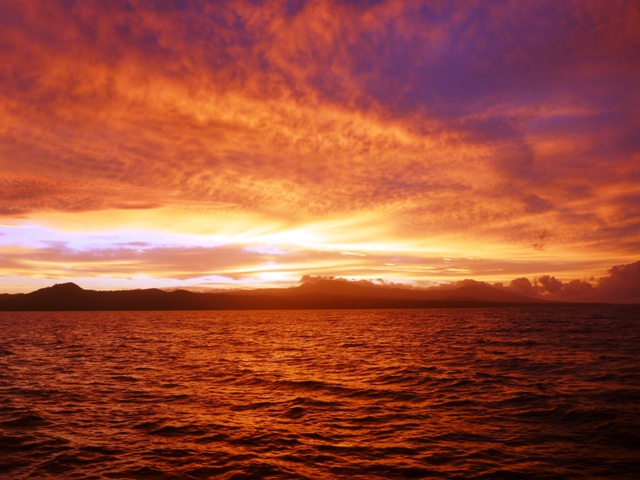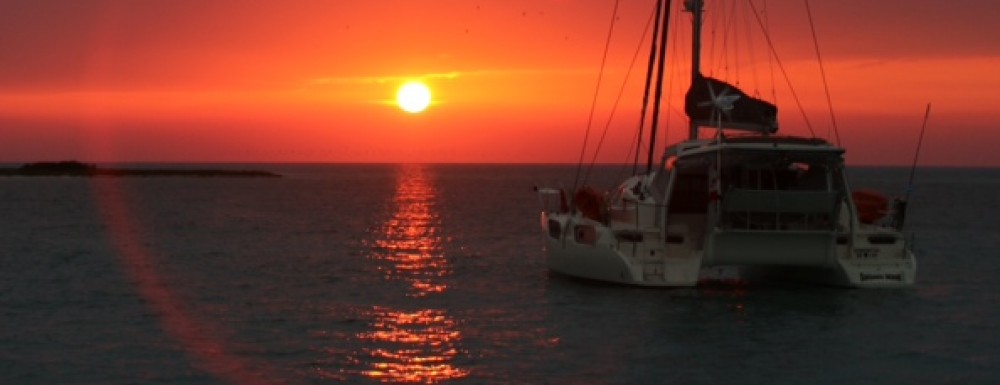The people of Vanuatu are mainly Melanesian and are called Ni-Van which means ‘of Vanuatu’. Each island here seems to have its own traditions, ceremonies, status objects and rights, which is known as their Kastom way of life. There are many tribal languages but the main language is bislama, a Melanesian language with English roots.
The village of Olal on Northern Ambrym puts on an annual festival in August called Back to My Roots to communicate and educate the traditions and kastom way of life of the people of Ambrym. It’s a fundraiser but also a way of educating the younger people in the hope of keeping the stories alive.
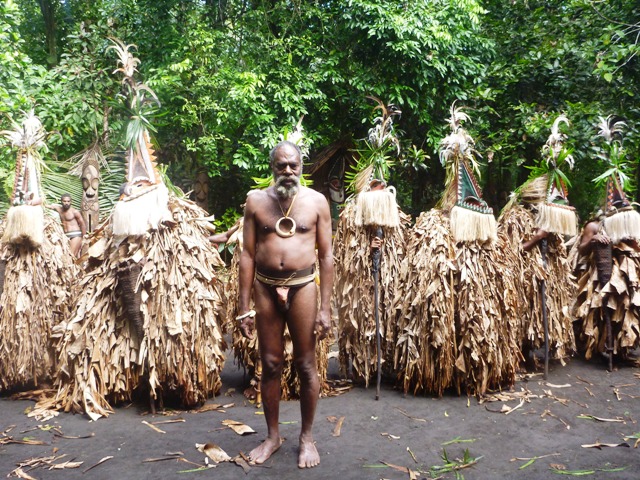
We anchored at Nopul anchorage on the Western side of Ambrym along with about 15 other boats and walked to Olal, where we met Chief Sekor and paid our fee to attend the 2 day festival. (9000 vatu). Then it was a walk into the jungle where we arrived at a clearing with carved totem poles, a small hut with Rom masks on it and tree logs for us to sit and watch. Men in traditional Nambas (penis sheaths) entered the clearing stomping their feet to the beat of tam tam drums.
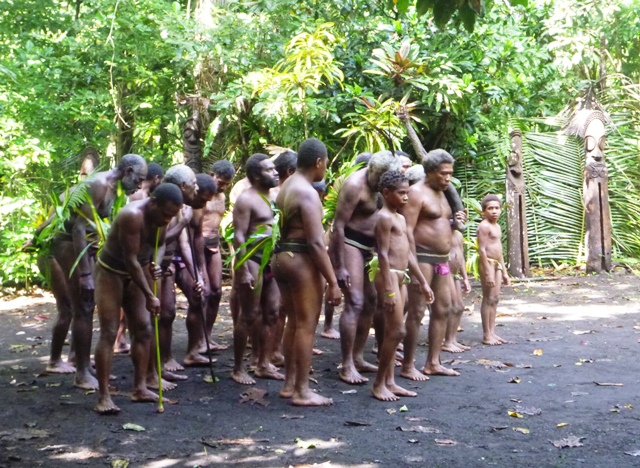
One of the locals John would communicate what each dance represented so we had a small understanding of what was happening. For each dance the men gather in a circle facing inward to a story teller in the centre talking in their local language and tam tam drums beating. The dances were mainly performed by the men who stomp their feet into the earth, occasionally breaking from the circle to dance around the group, while the story continues on.
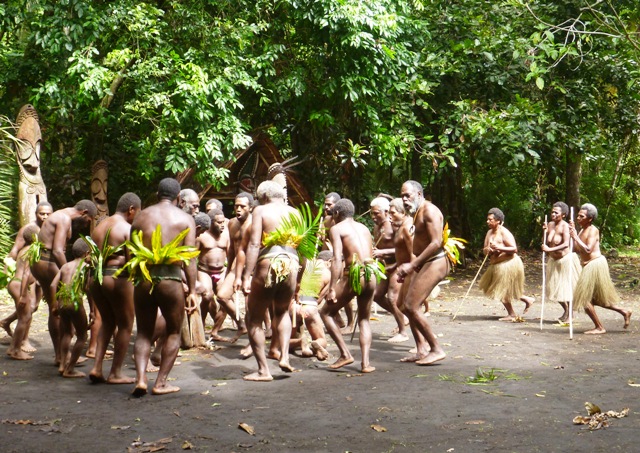
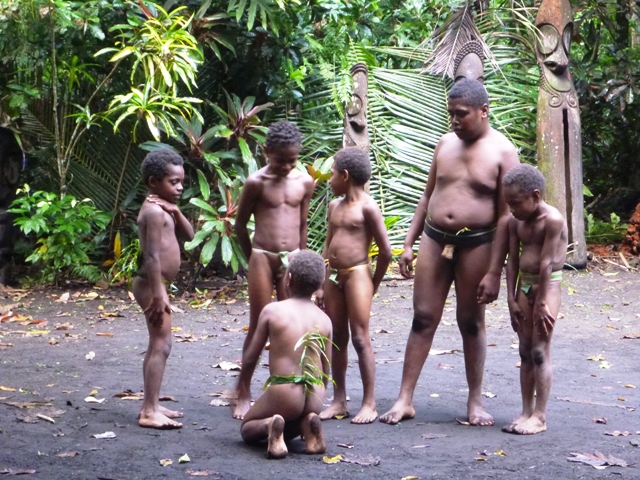
Magic is important in this culture with black magic being feared (e.g. barbed wire being placed around an object to keep the evil out) and good magic being practiced (e.g. the chief must plant the first yam on Ambrym of the season as that ensures a good crop). They had a couple of magic shows for us where a small palm tree was planted in the ground and it took 3 men from the audience to pull it out.
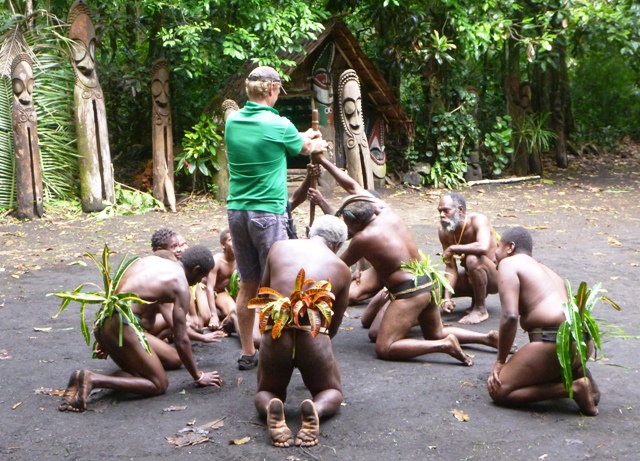
The Rom dance tells a story of good versus evil and has been passed through the various villages on Ambrym where each villages stories are told and kept alive in their local dialect. On the island the Rom dance is still used for different celebrations eg appointment of chiefs, Yam harvest time and circumcision ceremonies. The Rom dancers who have colorful masks and are encased in banana leaves represent evil spirits who move in mass around the ‘good’ men and boys who are chanting, singing and stomping to the beat of the drum.
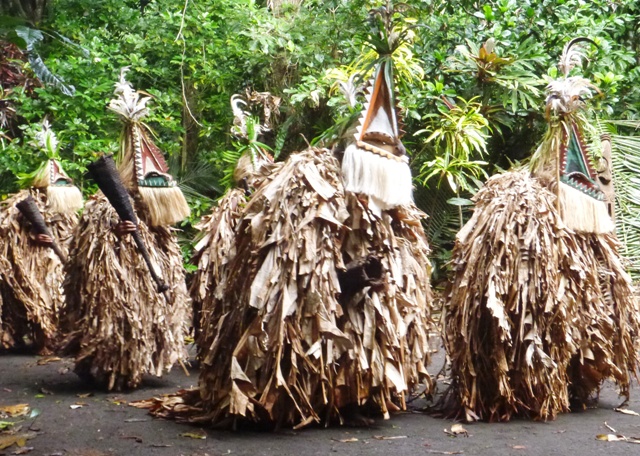
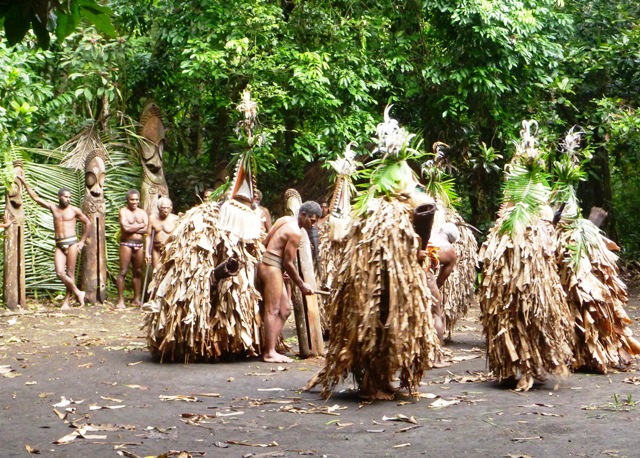
Sand drawings are another traditional way of telling stories or drawing pictures and messages. They start with a rectangle which is split into segments and then without removing their finger they draw with circles and shapes but never a straight line.
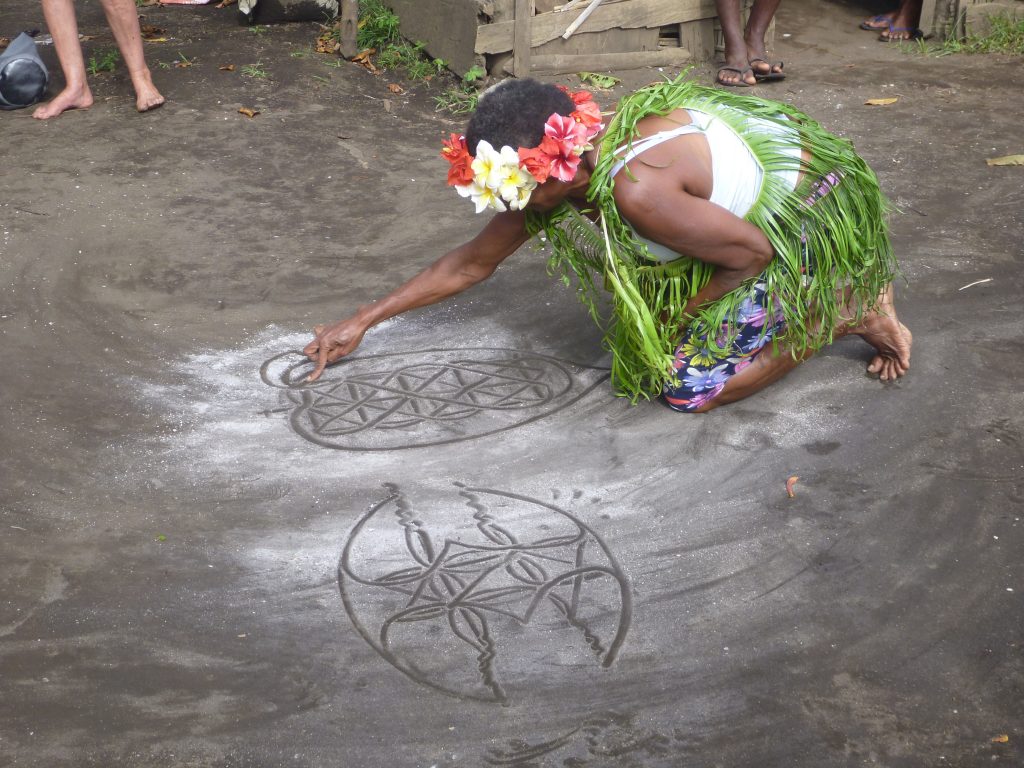
The ladies of Ambrym took us down to the waters edge to perform water music where their hands move rhythmically through the water and create sounds, which was amazing to hear. They typically do it in the rivers to communicate to the men that the women are bathing and should not come to the river.
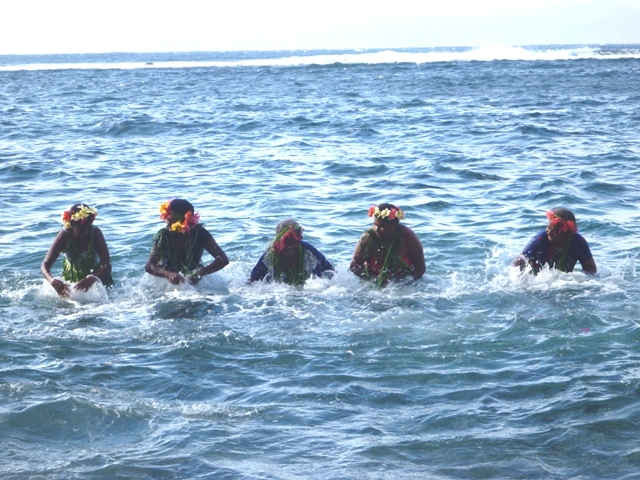
You could see that these people are very proud of the kastoms and traditions and enjoyed sharing their stories with us. Its not something we could completely comprehend and understand as there are so many traditions that have been passed down through generations but it did give us a small look into the rights of people in the community and their kastoms.
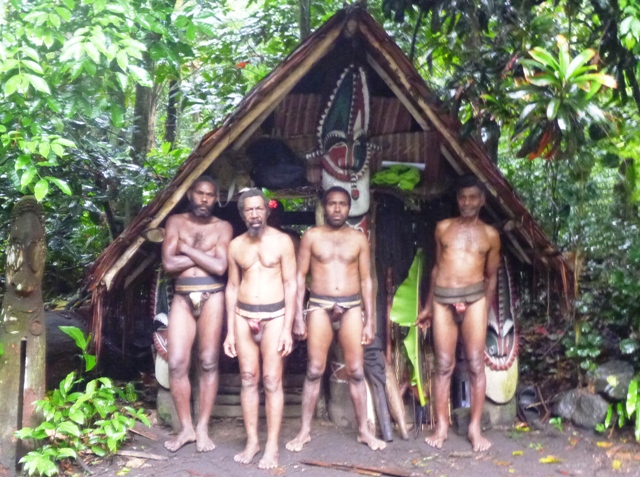
Ambrym is lush with fruit and vegetables because of the volcanoes on the island. As we walked the mud roads we met many locals who were very friendly stopping to talk after working their gardens. Sometimes they’d wait patiently till we were free and would shake our hand and welcome us. Rope was very much in demand here with the locals wanting it for tying up their cows and was traded by many a sailor for incredible stone and wood carvings.
